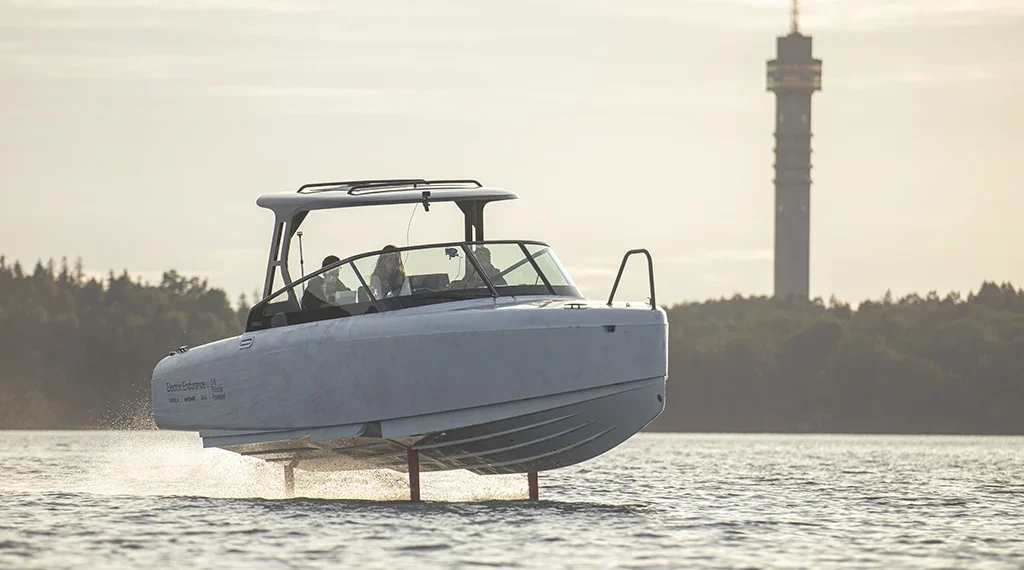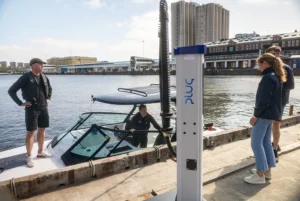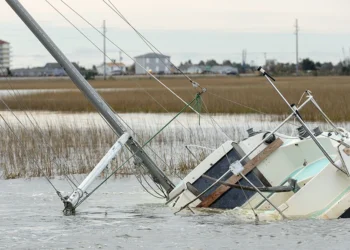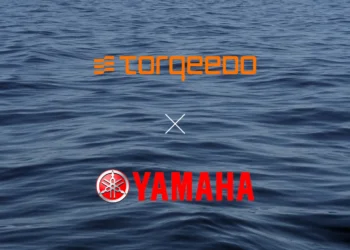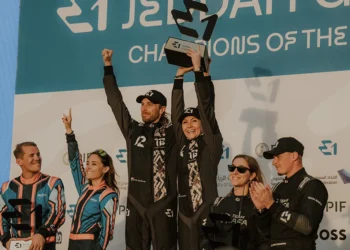Imagine traveling by electric boat from London to Amsterdam and back within 24 hours. During a recent endurance challenge, the electric, hydrofoiling Candela C-8 covered a distance equivalent to that journey, setting a new world record for the longest distance driven by an electric boat in a day.
Breaking Records with Electric Innovation
Swedish electric boat manufacturer Candela’s latest version of its C-8 foiling craft covered a remarkable 420 nautical miles–equivalent to 777 kilometers or 483 miles–within 24 hours in the Stockholm archipelago. The prior claimed record was 79 nautical miles achieved in 20 hours.
“This feat shows that fast, electric waterborne transport over long distances is viable today, not a distant future” says Gustav Hasselskog, Candela’s CEO and founder, who piloted the C-8 during the record attempt.
The Technology Behind the Record
While conventional planing electric boats face challenges due to water friction, leading to shorter ranges, the C-8 uses hydrofoil technology—wings slung under the hull—to reduce energy usage by 80 percent. This results in a range that’s two to three times longer than that of traditional electric boats. Moreover, the C-8 can be DC-charged thanks to Candela’s partnership with electric car company Polestar, which supplies both batteries and charging for the C-8. Together, this makes extended journeys using battery power feasible for the first time.
The record run was enabled by Northvolt’s mobile battery storage system Voltpack, which was used to DC charge the C-8. On the dock stood a 281 kWh Voltpack system and a Plug DC charger, which enabled rapid charging of the C-8’s battery. The average speed during the 24-hour run was 17 knots, even when accounting for charging breaks. The route comprised a loop between Stockholm and the island of Tynningö, with DC charging after each lap.
The Powerhouse Behind the Run: Northvolt’s Battery Storage
The record distance run offered several insights about what can be achieved with Candela’s electric foiling vessels and a network of DC charging stations:
- The distance traveled in 24 hours equates to driving from Amsterdam to London and back.
- The C-8 could have shuttled across the English Channel between Dover and Calais 20 times in 24 hours.
- Traveling at an average speed of 17 knots including charging breaks, the C-8 could journey from Stockholm to Finland in 13 hours, outpacing the Finland ferry by three hours.
Candela conducted the record run in collaboration with battery maker Northvolt and charging station supplier Plug to showcase how future DC charging networks for boats could look like in archipelagos and remote coastal areas. Instead of making heavy investments in upgrading the local grid, islands can deploy battery systems like Voltpack to ensure that there’s enough power available for fast charging.
The Future of Marine Transport: Candela’s Vision
This fall, Candela introduces its new passenger vessel, the 30-person Candela P-12 Shuttle. This vessel can operate most of the world’s coastal waterways while offering a sustainable and much more cost-effective alternative to today’s fossil-fueled waterborne traffic, which accounts for three percent of global GHG emissions.

”We don’t have to wait for tomorrow. We have the technology to shift toward sustainable marine transport now”, concludes Hasselskog.
For more information, visit candela.com.

